With “ambitious but achievable” transportation and land use proposals left off the table, California’s first climate protection mandated Sustainable Communities Strategy aimed high but did not quite achieve setting the San Diego region on a long-term course toward sustainability.
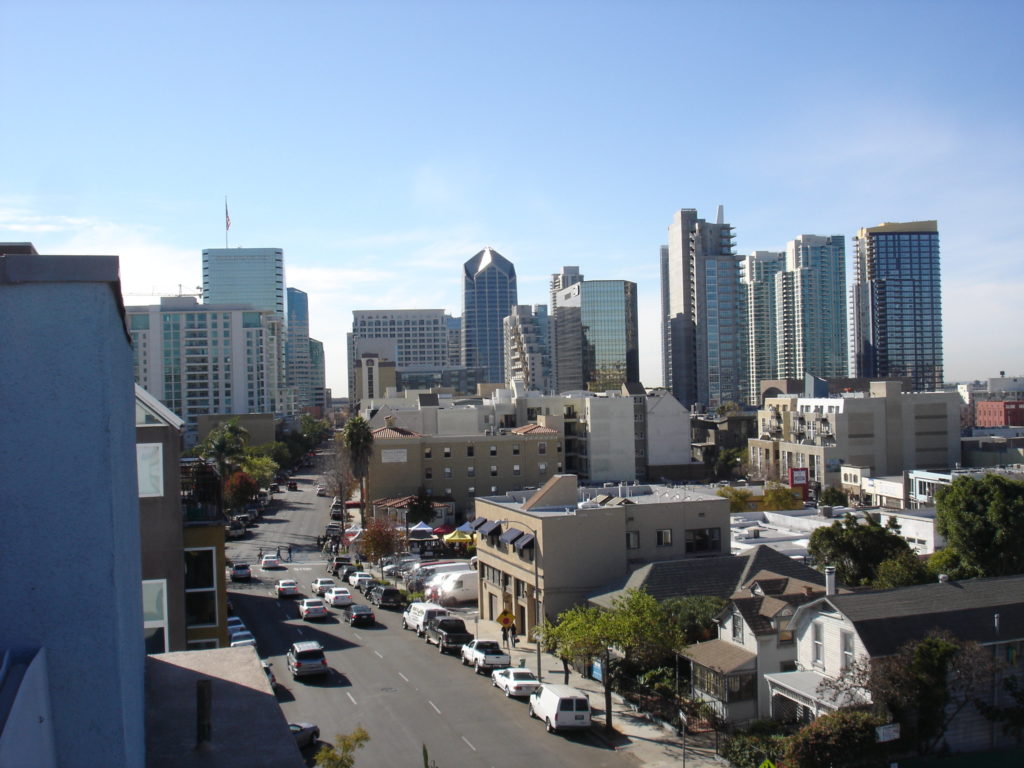

Anti-Sprawl Communities Plan with Transportation Choices Aimed at Reducing Global Warming
Governor Schwarzenegger signed California’s Sustainable Communities and Climate Protection Act, Senate Bill 375, into law on September 30, 2008. This unprecedented though clearly imperfect bill links incentive-based (not mandated) land use decisions, how and where cities can grow, to transportation funding and global warming. Locating housing closer to jobs, providing transportation choices, and creating walkable communities can reduce commute times. It also will cut millions of tons of greenhouse gas (GHG) pollution, while improving quality of life.
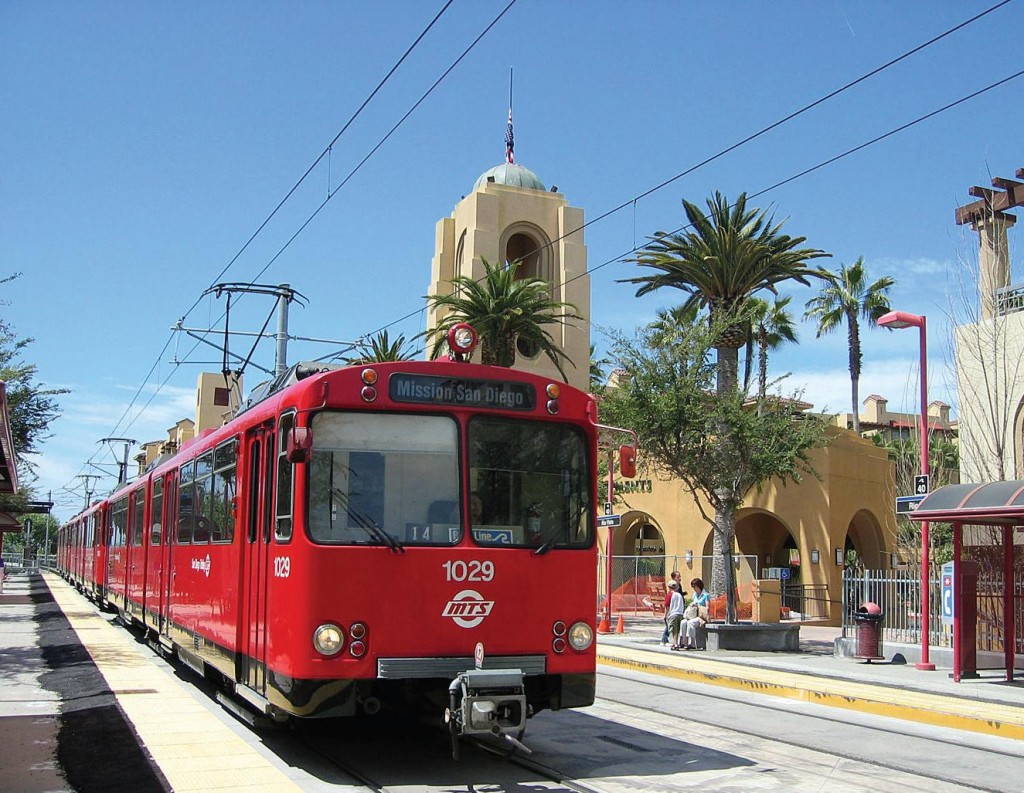

Sprawling communities, built into wilderness and open spaces far from urban centers or anywhere to walk or bike, require significant expenditure on roads and other infrastructure. These auto-dependent non-places have made driving to work, the post office, and your kid’s friend’s house, the single-largest and fastest-growing source of global warming pollution in California. We need a plan, something, to stop this climate destabilizing consumer of wildlife habitat and sterilizer of human habitats.
San Diego Association of Governments (SANDAG) approved the first Sustainable Communities Strategy (SCS) in October 2011. While it represents significant progress in attaining necessary cuts in greenhouse gases, in the long term it falls short with a number of other constraints. I reference “San Diego and SB 375: Lessons from California’s First Sustainable Communities Strategy,” completed by transportation consultant Eliot Rose, Autumn Bernstein of ClimatePlan, and Stuart Cohen of TransForm. With 17 more regional SCS documents in the state yet to be approved, so many lessons can be learned about involving private industry stakeholders, state agencies, and the public at large.
Judge Rules Transportation Plan in San Diego Violates State Enviro. Laws –StreetsBlog LA- By Damien Newton
A Superior Court Judge ruled that the San Diego Association of Governments (SANDAG) violated state law by failing to fully account for, and take steps to reduce, climate pollution in its environmental review of the region’s long-term transportation plan in the environmental review of the Long Term Plan. Link to article
San Diego Has A Plan
The devil, as always, is in the details. We do see some progress, as the plan meets the 2020 and 2035 targets in part by increasing growth in regional centers with Transit-Oriented Development strategies, integrating vanpooling and commute programs, and an up-front investment in public transportation.
Unfortunately, it does not alter San Diego County’s sprawling auto-dependent land use patterns, deferring to local government stonewalling. As a result, progress on reducing per capita greenhouse gas emissions and vehicle miles traveled actually backslides from 2035 to 2050 — hardly the necessary re-envisioning we need. The California Attorney General weighed in with a scolding and later joined a lawsuit with the Cleveland National Forest Foundation, the Center for Biological Diversity, and the Sierra Club, charging SANDAG used a deficient process to develop a flawed plan that will invest primarily in expanding and extending regional in freeways at the expense of public transit. The result will be increased sprawl and pollution that will exacerbate global climate change, they said.
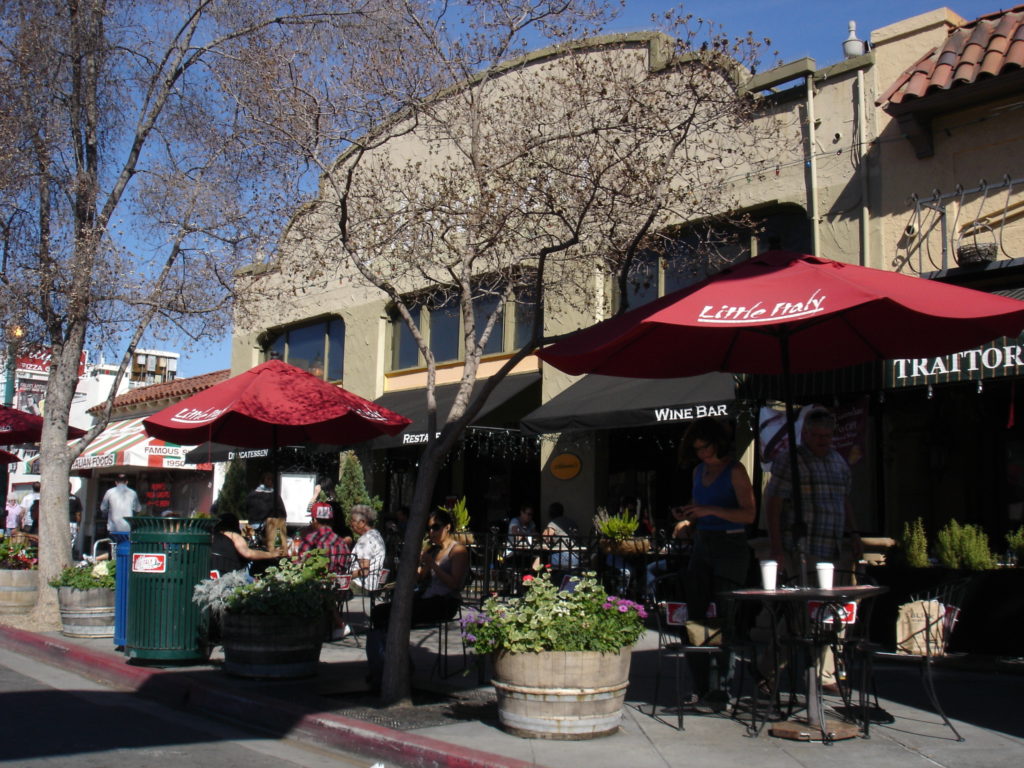

SANDAG, the metropolitan planning organization responsible for planning into the future for the County, approved some years ago a 40-year sales tax known as TransNet that contains significant transportation expansion projects. Those include $53 billion for bus rapid transit, light rail, commuter rail, and thankfully smart growth and habitat protection funding. However, it also programs major freeway expansions in the next 20 years, investing 28 percent more in the latter than on expanding transit. This will hamper construction of a mass transit system and complete streets that could provide viable alternatives to driving while enabling compact, neighborhood-oriented smart growth developments key to the strategy.
That the SCS did not consider front-loading the transit plans as well as require local governments to plan for more infill development, our societal addiction to driving in traffic will continue, paying exorbitant gasoline prices, as the shiny new lanes will only fill with more cars.
Furthermore, it’s Land Use Plan did not analyze local use plans as to their response toward regional trends such as smart growth. SANDAG must accept the responsibility of being a comprehensive planning agency, and create a vision for local municipalities that goes beyond the often locally-based fiefdoms germane to local government planning. Thus comes the backsliding GHG emissions that will increase gradually after 2035, erasing any early gains.
Lessons Learned: Planning for Land Use, Transportation, and Living Re-Imagined
Revisit Unsustainable Committed Funds and Projects and Develop New Funding: With transportation funding already “committed” to the freeway-driving-solo-auto-commuter paradigm, the movement toward sustainability will be slow indeed. Policies must be changed that redefine funds already stipulated for sprawl.
In addition, innovative funding measures must be explored such as congestion pricing, fuel fees and VMT-based fees. That said, one must be careful about regressive taxation and privatization of public resources in order to sell them back to the user. Transportation should be considered a public good and the engine of a regional and local economy, so new revenues should take into account their impacts on different income levels and demographics. The move toward toll roads, evident in San Diego and Orange County, have priced thousands of motorists off precious transportation improvements based on their inability to pay the fee.
Prioritize Sustainable Smart Growth Now: Projects necessary to re-imagine the landscape, such as light-rail and other mass transit improvements, should be prioritized. Land use scenarios such as strengthened Transit-Oriented Development and Complete Streets requirements should work in tandem, especially in transportation sales tax measures that are often more hopeful sources of financing. They can be the impetus to secure more significant sources of funding.
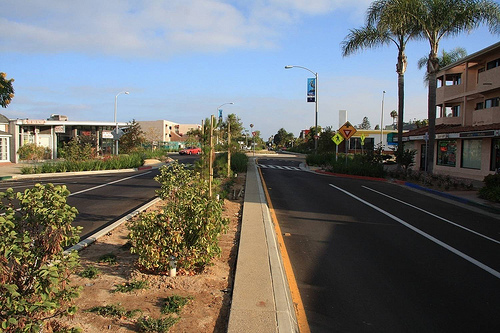

Complete streets policies, for the record, ensure roads designed and operated to enable safe access for all users: pedestrians, bicyclists, motorists, and public transportation users of all ages and abilities. Caltrans updated a basic policy in 2008, spurring an overhaul of the agency’s procedures and creating new ways to measure how the system meets the needs of those using the roadway by car, foot, bicycle, and public transportation. Fifteen communities in California have adopted Complete Streets policies.
Reduce Long-Term GHGs Steadily in Regional Land Use Plans Through Local Plan Revisions and CEQA Incentives: Regional and local government plans should also be revisited with the eye toward sustainability and reduction of vehicle miles traveled through smart growth and complete streets. Transit priority areas could accommodate more growth, while open spaces, parks, recreational areas and wildernesses should be permanently preserved. Streamlining of projects is available in the California Environmental Quality Act (CEQA) review process.
Active Participation from California’s Air Resources Board (ARB) and Other State Agencies: ARB’s review of the SCS process should go beyond technical issues of plans’ obtaining GHG reductions targets. They must look at transportation funding assumptions relative to time horizons, as well as land use assumptions that are project-specific, and how they will affect the overall success the SCS will have attaining reduction targets.
In addition, ARB should work with other state agencies such as the California Transportation Commission to develop official guidance on plan consistency across the state. ARB’s review did not address environmental justice, social equity, nor jobs-housing balance. Instead, the Board suggested other state agencies, such as the Strategic Growth Council, would be better suited to evaluate the plans performance measures in that regard.
Conclusion: A Mixed Bag
With “ambitious but achievable” transportation and land use proposals left off the table, California’s first SCS aimed high but did not quite achieve setting the San Diego region on a long-term course toward sustainability. Work remains to be done there as well as across the state or else we as a people are in trouble.
Sources:
Eliot Rose, Autumn Bernstein, and Stuart Cohen: “San Diego and SB 375,” TransForm
A Guide to California Sustainable Communities and Climate Protection Act, NRDC http://www.nrdc.org/globalwarming/sb375/

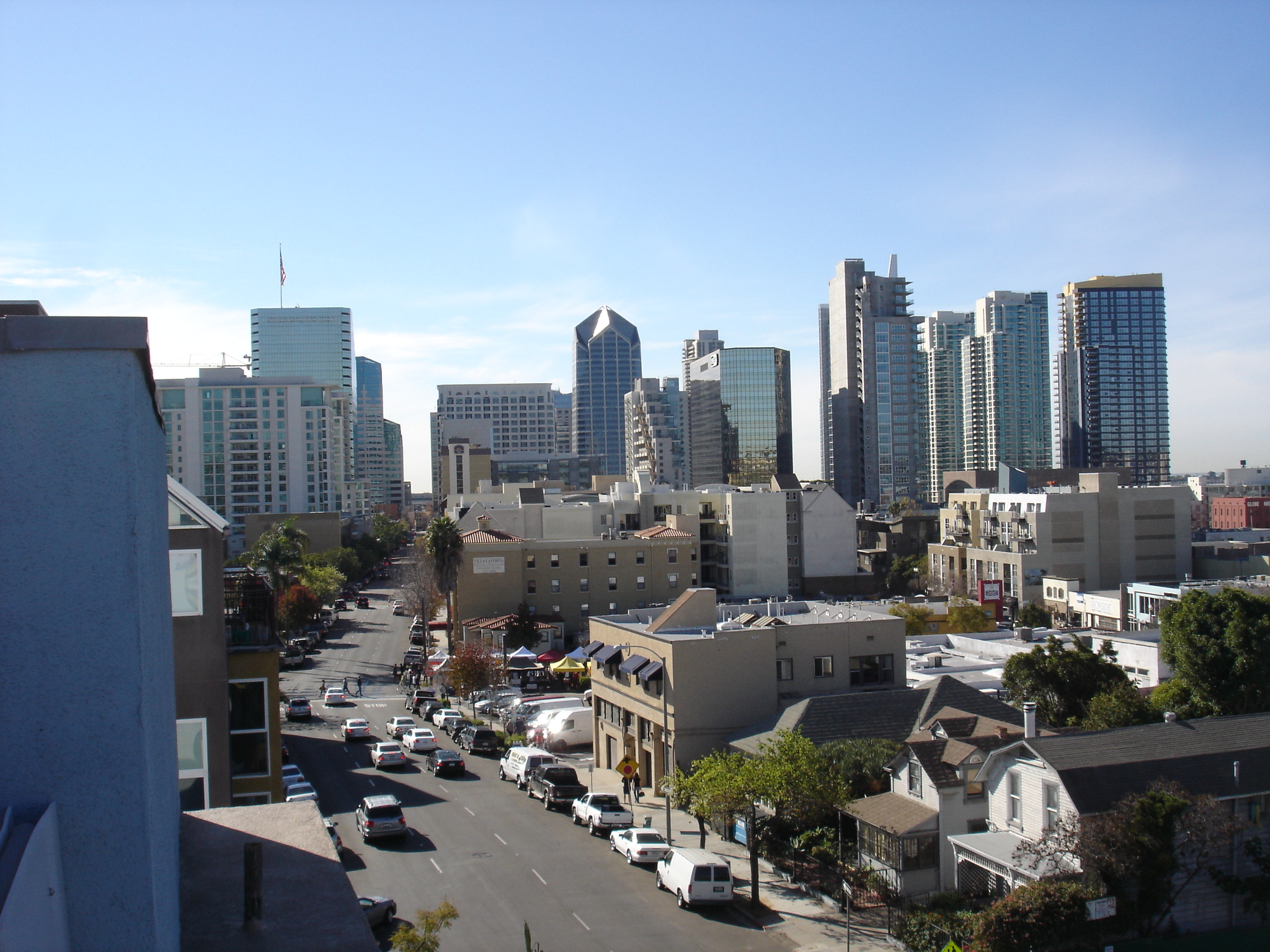




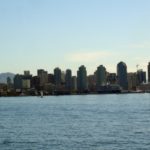
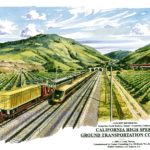






Pingback: San Diego: Sunshine Sprawl and the City of Villages By Jack Eidt | WilderUtopia.com
this article is the confirmation of what the author of state of the world says ”
…. governments—which set laws, create soci-
etal priorities, and design the cities and towns
where people live—will be central players in
nurturing such a culture of sustainability.”
Pingback: Hello Urbanism: Southern California Sprawl Grows Up | WilderUtopia.com
Pingback: Sustainable Biofuels? From Agro-Fueled Land Conflicts to Algae | WilderUtopia.com